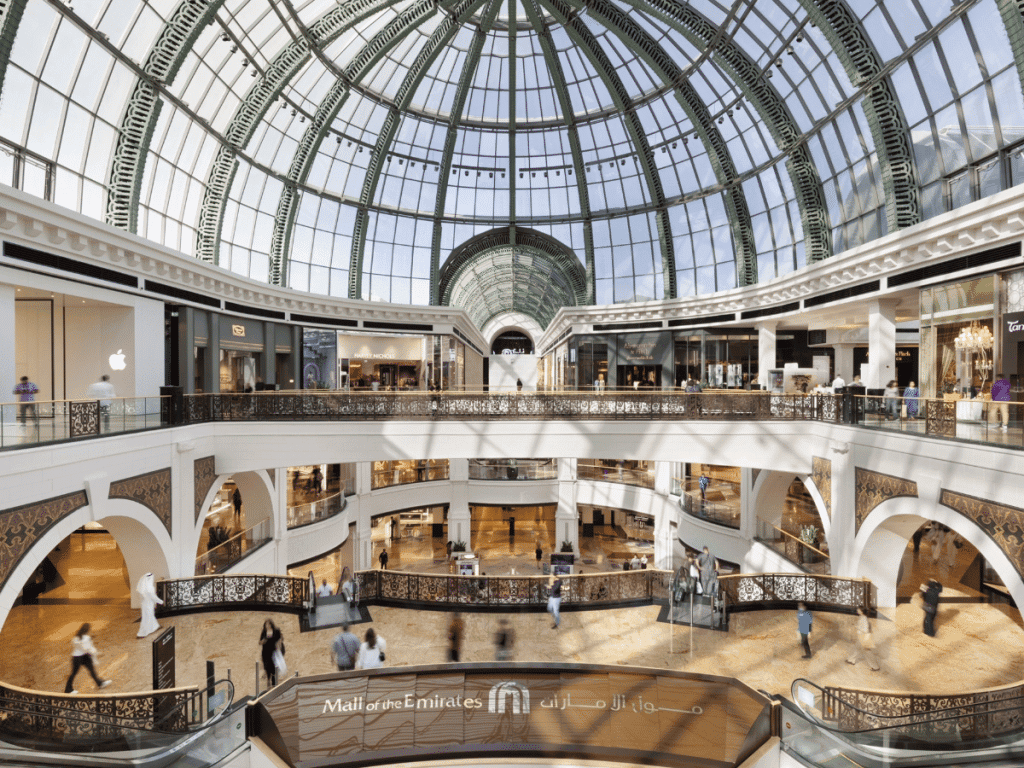Retail has always been a dynamic sector, constantly evolving to reflect consumer preferences, economic conditions, and technological advancements. However, few shifts have been as pronounced—or as disruptive—as the recent pivot toward experiential retail. This movement, born from necessity and shaped by innovation, is redefining how retail spaces are designed, operated, and monetized.
For Retail Real Estate Investment Trusts (REITs)—which own and manage income-generating retail properties such as malls, shopping centers, and standalone stores—this transformation presents both a challenge and an opportunity. In this article, we’ll explore how experiential retail is influencing the retail landscape, what it means for REIT strategies, and how investors and landlords are adapting to a new era of consumer engagement.
Understanding the Rise of Experiential Retail
Experiential retail refers to a shopping model where physical stores go beyond selling products and instead focus on delivering immersive experiences. These experiences can range from product demonstrations and brand activations to social events, interactive displays, art installations, workshops, and entertainment activities.
This shift arises from a key realization: In an age of e-commerce dominance, physical stores must offer something that online platforms cannot—human connection, sensory engagement, and memorable interactions.
The traditional retail model emphasized inventory, square footage, and transactional efficiency. In contrast, experiential retail prioritizes:
- Customer engagement and entertainment
- Interactive and personalized shopping experiences
- Brand storytelling in physical environments
- Community-building and social interaction
These elements are transforming the purpose of retail properties from transactional centers into lifestyle destinations.
Factors Driving the Shift Toward Experiential Retail
Several overlapping factors are contributing to the growing importance of experiential retail in the global marketplace:
1. E-commerce Disruption
Online shopping has changed consumer behavior permanently. With the ability to purchase nearly anything online, often at lower prices and with greater convenience, traditional brick-and-mortar retailers have been forced to rethink their value proposition. Experiential retail provides a compelling reason for consumers to visit physical locations.
2. Changing Consumer Preferences
Modern consumers, particularly Millennials and Gen Z, are placing greater value on experiences over possessions. This is evident in trends such as travel spending, subscription services, and social media-driven lifestyle choices. Retail spaces that provide shareable, memorable experiences resonate more with younger demographics.
3. Post-Pandemic Recovery and Socialization
After long periods of lockdowns and social distancing, consumers are seeking opportunities to reconnect and engage socially. Retail environments that encourage interaction, exploration, and enjoyment are gaining popularity.
4. Technological Advancements
Innovations such as augmented reality (AR), virtual fitting rooms, smart mirrors, and mobile-integrated services are allowing retailers to blend the digital and physical. This creates engaging experiences that cannot be replicated online.
5. Brand Differentiation in a Competitive Market
With intense competition in both online and offline retail, brands are seeking ways to stand out. Experiential retail allows for unique brand expressions, deeper emotional connections with customers, and higher brand loyalty.
How Experiential Retail Impacts Retail REITs
Retail REITs are directly affected by how tenants operate and attract foot traffic. As experiential concepts become central to successful retailing, REITs are adjusting their property strategies in several fundamental ways.
1. Tenant Mix Transformation
Traditional department stores and mass-market retailers are losing ground to dynamic, experience-focused tenants. Successful REITs are now curating tenant mixes that include:
- Food and beverage concepts with interactive kitchens or mixology classes
- Entertainment venues such as cinemas, arcades, escape rooms, or virtual reality centers
- Wellness services like boutique fitness, spas, or meditation lounges
- Experiential showrooms for cars, electronics, or luxury goods
- Pop-up stores and rotating concept shops
This shift requires a reimagining of leasing strategies to accommodate non-traditional tenants and flexible short-term leases.
2. Property Redevelopment and Renovation
Experiential retail often demands open layouts, multi-use zones, and spaces adaptable for events or installations. Retail REITs are investing in renovations to:
- Create community zones and public gathering spaces
- Enhance indoor-outdoor flow in shopping centers
- Improve landscaping, lighting, and seating areas
- Support events and seasonal programming
This involves significant capital expenditure but can lead to improved foot traffic and higher tenant sales, justifying higher rents over time.
3. Revenue Models Beyond Rent
With the integration of events, pop-ups, and co-hosted experiences, REITs are discovering new revenue streams. These may include:
- Event hosting fees
- Sponsorship partnerships
- Parking fees and data monetization
- Ancillary income from co-working, co-retail, or co-living spaces within mixed-use developments
Retail spaces are becoming ecosystems rather than mere leasable square footage.
4. Data Collection and Consumer Insights
Modern experiential tenants often use technology to gather insights about shopper behavior, dwell times, and foot traffic patterns. Retail REITs, in turn, can collect aggregated data to optimize space utilization, tenant placement, and marketing campaigns.
Investing in consumer analytics infrastructure helps REITs offer more value to tenants while improving the overall customer experience.
Case Studies and Real-World Examples
To better understand how experiential retail is being implemented, we can look at some notable international trends that may influence REIT behavior, including those in Arab countries.
1. Mall of the Emirates – Dubai, UAE

Majid Al Futtaim’s flagship mall is known not only for luxury shopping but also for Ski Dubai, one of the world’s first indoor ski resorts. This immersive experience draws visitors regardless of shopping intent and supports high foot traffic for surrounding tenants.
2. Westfield London – United Kingdom
Westfield has introduced interactive event spaces, seasonal activities like indoor markets and art exhibits, and in-mall concierge services. The mall functions as both a retail destination and a social gathering space.
3. The Avenues – Kuwait
Combining luxury retail, dining, leisure, and themed districts, The Avenues exemplifies experiential design. It features walking streets, plazas, and cultural areas that encourage exploration beyond shopping.
These examples show that integrating leisure, lifestyle, and culture into retail properties leads to higher engagement and longer customer visits—metrics critical for REIT performance.
Implications for Investors and Property Managers
The rise of experiential retail is prompting a strategic reassessment for anyone involved in retail property investment. Here are some key takeaways for investors in Retail REITs:
Long-Term Viability Depends on Adaptability
REITs that remain committed to outdated property concepts risk becoming irrelevant. The ability to adapt quickly, renovate creatively, and attract innovative tenants will separate winners from laggards in the sector.
Occupancy Rates May Fluctuate with Experimentation
Experiential tenants often sign shorter leases and test new formats. This can lead to higher turnover and volatility in occupancy metrics. However, the upside potential—through footfall, engagement, and rent premiums—often offsets this risk.
Higher CapEx Requirements in the Short-Term
Transforming retail centers into experiential hubs is not cheap. Investors should expect Retail REITs to allocate more capital toward infrastructure improvements, digital integration, and placemaking. These are long-term investments intended to safeguard relevance.
Greater Focus on Mixed-Use and Community-Oriented Design
Retail can no longer exist in isolation. Properties that blend retail with residential, office, hospitality, and public spaces tend to perform better. Retail REITs are increasingly venturing into mixed-use developments that function as lifestyle communities rather than shopping destinations.
Relevance to the Arab Market
In many Arab countries, particularly in the Gulf region, retail environments are already seen as social hubs. Malls serve as community centers, family outing venues, and cultural spaces. This makes the transition to experiential retail not only feasible but also highly aligned with existing behaviors.
For example:
- Malls in Saudi Arabia and Qatar are hosting art galleries, fashion shows, and cultural festivals.
- In Egypt, developers are building lifestyle centers in New Cairo and Sheikh Zayed that combine outdoor dining, concerts, and boutique retail.
- In UAE, immersive concepts such as VR parks and indoor sports arenas are standard features in major shopping centers.
As digital commerce rises across the region, physical retail must evolve to protect its share. Retail REITs that embrace experiential design can play a key role in maintaining this balance.
Conclusion: Experience is the New Anchor
Experiential retail is not a passing trend; it’s a fundamental redefinition of the retail value proposition. In a digital-first world, the primary purpose of physical retail space is no longer merely to sell products, but to deliver experiences.
Retail REITs that understand this shift and invest accordingly are well-positioned to outperform over the long term. They must become curators of experience, facilitators of interaction, and builders of environments that offer what online shopping cannot: real-world emotion, discovery, and connection.
By transforming properties into destinations rather than just locations, REITs can ensure continued relevance, financial performance, and consumer loyalty in a rapidly evolving global retail landscape.








